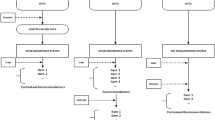Abstract
This paper investigates the art design of user interaction experience in mobile systems through the methods of contextual perception and machine learning. The theoretical foundations for the design of intangible cultural heritage interactive display resources include digital display theory, intangible cultural heritage education theory, embodied cognition theory, and gamification design theory. Based on the modelling and analysis of the theoretical foundations, the design principles are derived, including the heritage education principle, the somatic interaction design principle, and the content design principle. In this paper, we use ontologies to construct user knowledge models, fuse multi-situational similarity metrics, screen out candidate neighbour sets through preliminary screening, then combine the user's activity to construct time-based weight tensor scores, use tensor decomposition to obtain recommendation evaluation values, and finally use the recommendation evaluation values to make artistic recommendations. The experimental results show that the algorithm can still obtain a good recommendation implementation in the case of extremely sparse data. The analysis of the fit between augmented reality and folk art appreciation class, as well as the reference to relevant application cases, make design and practice of augmented reality application in folk art appreciation class, try to solve the common problems in folk art appreciation class, analyse the feedback effect and make a summary and outlook.










Similar content being viewed by others
Explore related subjects
Discover the latest articles, news and stories from top researchers in related subjects.References
Augusto J, Aztiria A, Kramer D et al (2017) A survey on the evolution of the notion of context-awareness. Appl Artif Intell 31(7–8):613–642
Guo J, Li X, Liu Z et al (2020) TROVE: a context-awareness trust model for VANETs using reinforcement learning. IEEE Internet Things J 7(7):6647–6662
Zhu H, Cao Y, Wang W et al (2018) Deep reinforcement learning for mobile edge caching: review, new features, and open issues. IEEE Network 32(6):50–57
Yang Q (2018) A novel recommendation system based on semantics and context awareness. Computing 100(8):809–823
Dinh LTN, Karmakar G, Kamruzzaman J (2020) A survey on context awareness in big data analytics for business applications. Knowl Inf Syst 62(9):3387–3415
Doush IAA, Jarrah S (2019) Accessible interface for context awareness in mobile devices for users with memory impairment. Int J Biomed Clin Eng (IJBCE) 8(2):1–30
Liu Y, Ma X, Shu L et al (2020) Internet of things for noise mapping in smart cities: state of the art and future directions. IEEE Netw 34(4):112–118
Gubert LC, da Costa CA, da Rosa RR (2020) Context awareness in healthcare: a systematic literature review. Univ Access Inf Soc 19(2):245–259
Avram A, Matei O, Pintea CM et al (2020) Context quality impact in context-aware data mining for predicting soil moisture. Cybern Syst 51(7):668–684
Capponi A, Fiandrino C, Kantarci B et al (2019) A survey on mobile crowdsensing systems: challenges, solutions, and opportunities. IEEE Commun Surv Tutor 21(3):2419–2465
Xing Y, Lv C, Wang H et al (2019) Driver lane change intention inference for intelligent vehicles: framework, survey, and challenges. IEEE Trans Veh Technol 68(5):4377–4390
Mendiboure L, Chalouf MA, Krief F (2019) Edge computing based applications in vehicular environments: comparative study and main issues. J Comput Sci Technol 34(4):869–886
Wang J, Jing X, Yan Z et al (2020) A survey on trust evaluation based on machine learning. ACM Comput Surv (CSUR) 53(5):1–36
Ebrahimzadeh A, Chowdhury M, Maier M (2019) Human-agent-robot task coordination in FiWi-based tactile Internet infrastructures using context-and self-awareness. IEEE Trans Netw Serv Manage 16(3):1127–1142
Aguilar J, Jerez M, Rodríguez T (2018) CAMeOnto: context awareness meta ontology modeling. Appl Comput Inform 14(2):202–213
Alexopoulos K, Sipsas K, Xanthakis E et al (2018) An industrial Internet of things based platform for context-aware information services in manufacturing. Int J Comput Integr Manuf 31(11):1111–1123
El-Mougy A, Al-Shiab I, Ibnkahla M (2019) Scalable personalized iot networks. Proc IEEE 107(4):695–710
Haslgrübler M, Gollan B, Ferscha A (2018) A cognitive assistance framework for supporting human workers in industrial tasks. IT Prof 20(5):48–56
Mohammadi M, Al-Fuqaha A (2018) Enabling cognitive smart cities using big data and machine learning: approaches and challenges. IEEE Commun Mag 56(2):94–101
Linda S, Minz S, Bharadwaj KK (2019) Fuzzy-genetic approach to context-aware recommender systems based on the hybridization of collaborative filtering and reclusive method techniques. AI Commun 32(2):125–141
Ochoa SF, Gutierrez FJ (2018) Architecting e-coaching systems: a first step for dealing with their intrinsic design complexity. Computer 51(3):16–23
Hussain F, Hassan SA, Hussain R et al (2020) Machine learning for resource management in cellular and IoT networks: potentials, current solutions, and open challenges. IEEE Commun Surv Tutor 22(2):1251–1275
Acknowledgements
This work was supported by the Scientific Research Fund in the Field of Humanities and Social Sciences of Henan University of Science and Technology (No: 2014SQN014).
Author information
Authors and Affiliations
Corresponding author
Ethics declarations
Conflict of interest
The authors have no competing interests.
Additional information
Publisher's Note
Springer Nature remains neutral with regard to jurisdictional claims in published maps and institutional affiliations.
Rights and permissions
About this article
Cite this article
Liu, L. The artistic design of user interaction experience for mobile systems based on context-awareness and machine learning. Neural Comput & Applic 34, 6721–6731 (2022). https://doi.org/10.1007/s00521-021-06160-x
Received:
Accepted:
Published:
Issue Date:
DOI: https://doi.org/10.1007/s00521-021-06160-x




